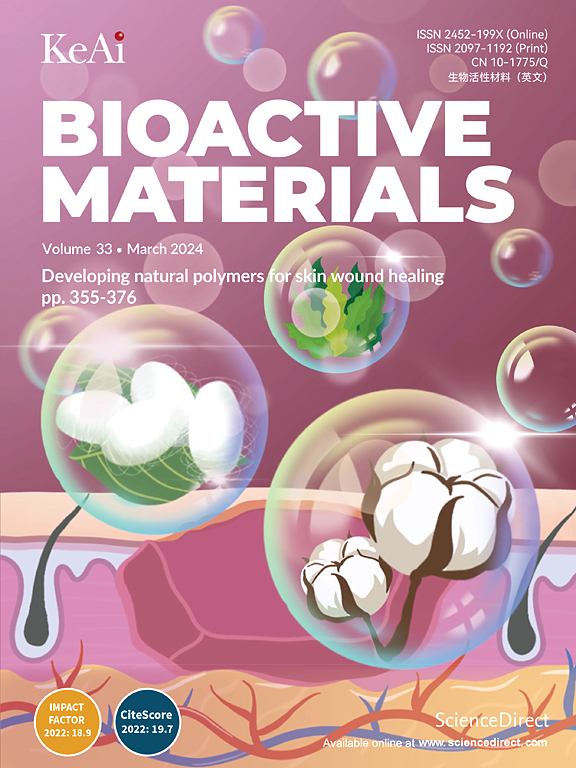Engineering functional electroconductive hydrogels for targeted therapy in myocardial infarction repair
IF 18
1区 医学
Q1 ENGINEERING, BIOMEDICAL
引用次数: 0
Abstract
Myocardial infarction (MI) is characterized by a paucity of cardiomyocyte regeneration, leading to significant morbidity and mortality. Contemporary therapeutic modalities, while mitigating ischemic effects, fail to reconstitute the impaired electromechanical coupling within the infracted myocardium. Emerging evidence supports the utility of electroconductive hydrogels (ECHs) in facilitating post-MI cardiac function recovery by restoring the conductive microenvironment of the infarcted tissue. This comprehensive review delineates the taxonomy of ECHs predicated on their constituent conductive materials. It also encapsulates prevailing research trends in ECH-mediated MI repair, encompassing innovative design paradigms and microenvironment-sensitive strategies. The review also provides a critical appraisal of various implantation techniques, underscored by a thorough examination of the attendant considerations. It elucidates the mechanistic underpinnings by which hydrogels exert salutary effects on myocardial repair, namely by augmenting mechanical and electrical integrity, exerting anti-inflammatory actions, fostering angiogenesis, and curtailing adverse remodeling processes. Furthermore, the review engages with the pressing challenge of optimizing ECH functionality to achieve superior reparative outcomes post-MI. The discourse concludes with an anticipatory perspective on the evolution of ECH scaffolds, advocating for a tailored approach that integrates multifaceted physicochemical properties to cater to the nuances of personalized medicine.

求助全文
约1分钟内获得全文
求助全文
来源期刊

Bioactive Materials
Biochemistry, Genetics and Molecular Biology-Biotechnology
CiteScore
28.00
自引率
6.30%
发文量
436
审稿时长
20 days
期刊介绍:
Bioactive Materials is a peer-reviewed research publication that focuses on advancements in bioactive materials. The journal accepts research papers, reviews, and rapid communications in the field of next-generation biomaterials that interact with cells, tissues, and organs in various living organisms.
The primary goal of Bioactive Materials is to promote the science and engineering of biomaterials that exhibit adaptiveness to the biological environment. These materials are specifically designed to stimulate or direct appropriate cell and tissue responses or regulate interactions with microorganisms.
The journal covers a wide range of bioactive materials, including those that are engineered or designed in terms of their physical form (e.g. particulate, fiber), topology (e.g. porosity, surface roughness), or dimensions (ranging from macro to nano-scales). Contributions are sought from the following categories of bioactive materials:
Bioactive metals and alloys
Bioactive inorganics: ceramics, glasses, and carbon-based materials
Bioactive polymers and gels
Bioactive materials derived from natural sources
Bioactive composites
These materials find applications in human and veterinary medicine, such as implants, tissue engineering scaffolds, cell/drug/gene carriers, as well as imaging and sensing devices.
 求助内容:
求助内容: 应助结果提醒方式:
应助结果提醒方式:


